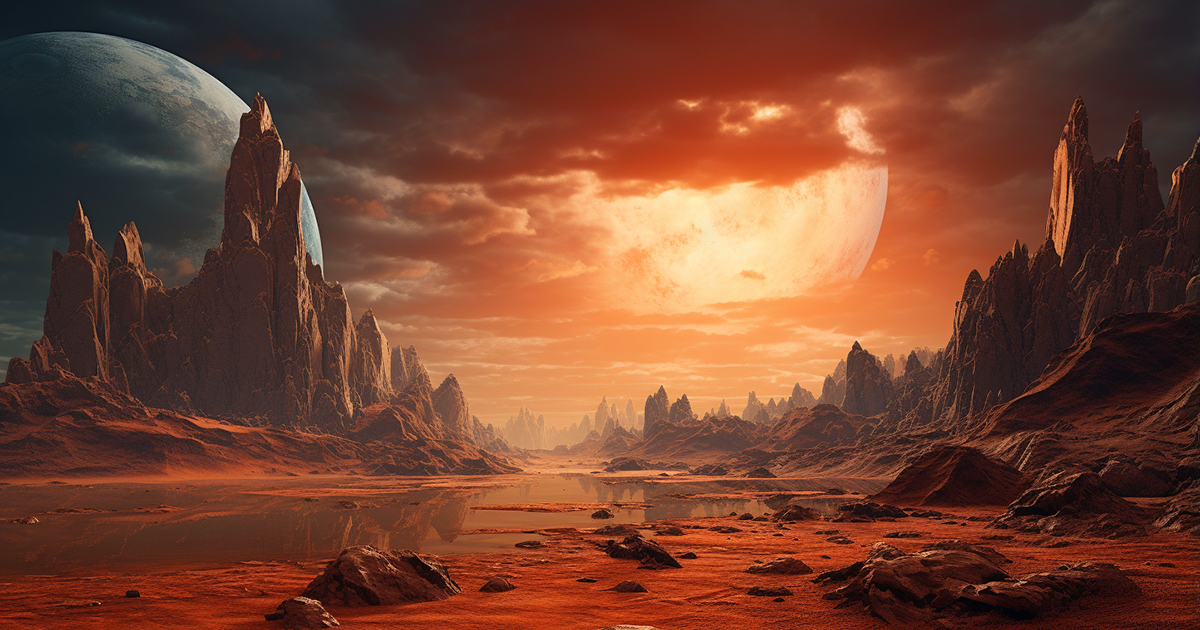The world of astronomy is filled with transformative moments that reshape our perception of the universe, forever altering our cosmic understanding. These moments often unfold discreetly, tucked away in scientific publications or captured through the lens of a telescope, revealing hidden wonders.
Such a moment occurred in Geneva, Switzerland, back in November 1995, when astrophysicists from the University of Geneva made a groundbreaking announcement. Their discovery, unveiled after gazing into the cosmic expanse, marked a significant shift in our celestial outlook.
Prior to this breakthrough, the concept of planets orbiting stars outside our solar system existed only in the realm of imagination, a distant notion confined to science fiction tales.
The focus of this monumental revelation was the distant celestial body known as 51 Pegasi, which unraveled the existence of an exoplanet — a planet circling a star beyond the bounds of our solar system. This revelation reverberated across the scientific community, igniting a revolution in the field of astronomy.
An exoplanet, essentially, is a cosmic entity orbiting a star other than our sun. The significance of this breakthrough lay in the fact that, before 1995, the existence of such planets was merely speculative.

Although we had speculated about their existence, the concrete evidence was lacking. Since that pivotal moment, however, the floodgates of discovery have swung wide open, leading astronomers to identify thousands of exoplanets residing within our Milky Way galaxy alone.
One of the critical criteria for pinpointing habitable exoplanets hinges on their location within the so-called “Goldilocks Zone.” This zone denotes the optimal distance from a star where environmental conditions are just right.
Not too hot, not too cold — mirroring the tale of Goldilocks finding the perfect porridge. Within this zone, temperatures support the presence of liquid water on a planet’s surface, a vital component for the potential sustenance of life as we know it.
The discoveries of exoplanets nestled within this habitable zone have sparked our collective imagination. Could these distant realms harbor alien life forms? Astronomers resonate an enthusiastic “yes,” pointing towards liquid water as a promising indicator for potential life on these distant celestial bodies.
Our Earth, nestled comfortably within the Goldilocks Zone around our sun, accentuates the significance of uncovering planets sharing similar conditions. Telescopes have emerged as powerful tools for detecting these cosmic companions, revealing that numerous stars in our galaxy host at least one planet within the Goldilocks Zone.
The provoking question captivating scientists and science enthusiasts alike revolves around the likelihood of unearthing concrete evidence of life on these far-flung exoplanets. It’s an enduring query that has lingered for decades, but recent advancements have propelled us closer to resolving this conundrum than ever before.

In July 2022, a groundbreaking event unfolded in Washington, DC, as President Joe Biden unveiled the inaugural image captured by NASA’s James Webb Space Telescope.
Boasting a staggering $10 billion price tag, this state-of-the-art apparatus showcases the most advanced infrared imaging technology ever devised. Its distinctive mission centers on scrutinizing planets within the Goldilocks Zone for potential signs of life.
The James Webb Space Telescope’s unprecedented ability to scrutinize exoplanet atmospheres heralds a revolutionary breakthrough. By capturing light emanating from these distant worlds and dispersing it through a prism, scientists can decipher the chemical composition of their atmospheres.
This capability opens vistas to detecting unnatural chemical signatures — a potent indicator of industrial activities, potentially signaling the presence of intelligent civilizations.
As we continue to catalogue a burgeoning roster of exoplanets and gather more insights from the James Webb Space Telescope, our comprehension of potential extraterrestrial life expands exponentially.
This extraordinary device stands as a transformative force, offering a new lens into the tapestry of our universe’s history and a gateway to unraveling the enigmas of otherworldly existence.
Video:
In conclusion, the voyage of exoplanet exploration has evolved from a silent revelation in scientific literature to an exhilarating pursuit for traces of life in the cosmic expanse. The Goldilocks Zones of distant stars have transcended theory, representing our prime prospect for encountering extraterrestrial companions. With the James Webb Space Telescope illuminating our path, we stand on the cusp of a thrilling era where the universe’s mysteries may finally be unveiled.
